Whiskers in the workplace: More cats with careers
- Published
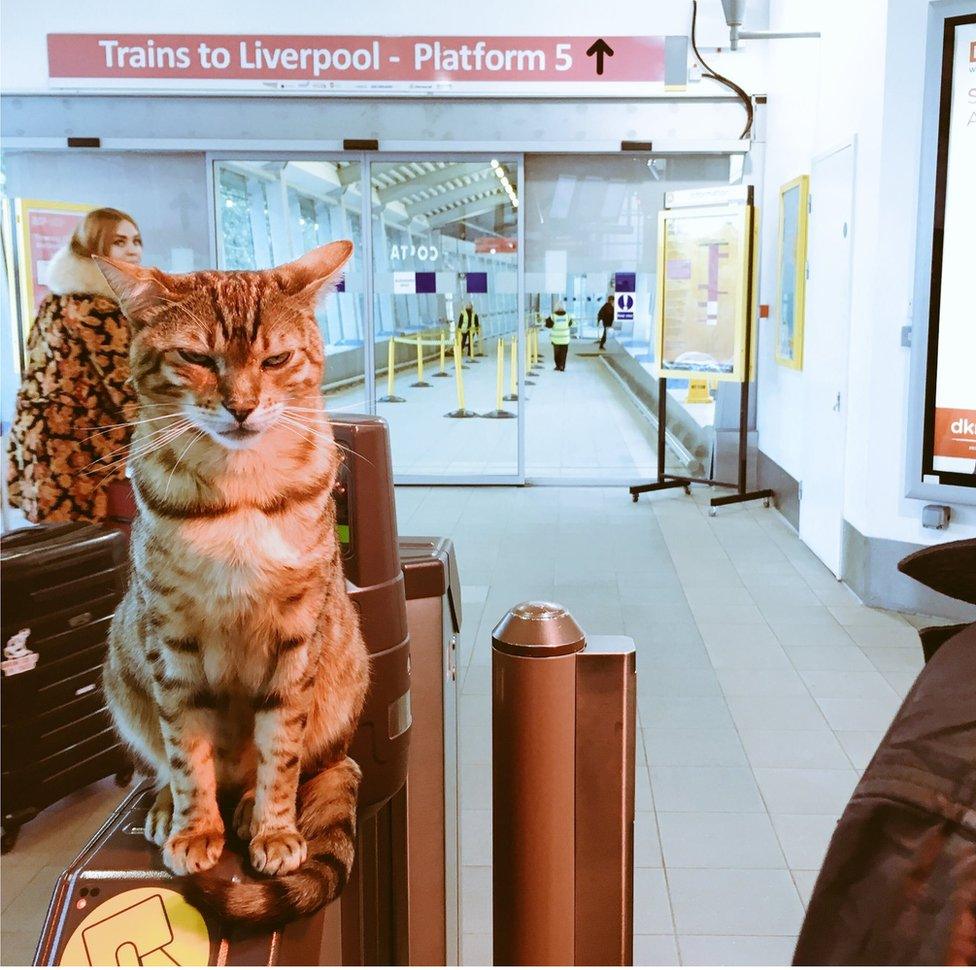
Paul - unimpressed by train passengers in Liverpool
Cats - well known for doing as they please - have on occasion surprised the human race by using their paws to hold down a job. BBC News featured some of these purposeful pusses last week - but the number of whiskers in the workforce was too great to do justice to in just the one instalment.
So welcome to Volume Two: More Cats with Careers.
Cricket cats
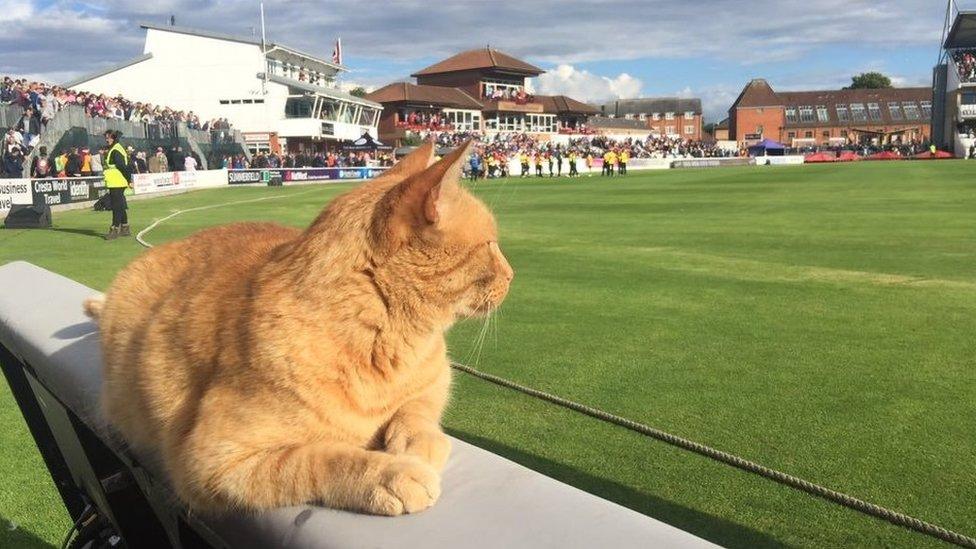
Meowzat!
What sport could possibly appeal more to a cat than one played at a languorous pace with scheduled meal breaks?
The sound of leather on willow appeals to some furry fans such as Brian, who is usually to be found at Somerset County Cricket Club. The handsome chap patrols the grounds and enjoys the ebb and flow of a county match.
Perhaps the best-known cricket cat was Peter, the Lord's cat, also known as the Marylebone Mog, who lived at the famous cricket ground in London from 1952 to 1964.
When the last of his nine lives ran out he became the only animal to be given an obituary in the Wisden almanac.
It described him as a well-known cricket-watcher who could often be seen prowling on the field of play; that he loved publicity and frequently appeared on the television.

Theatre cats
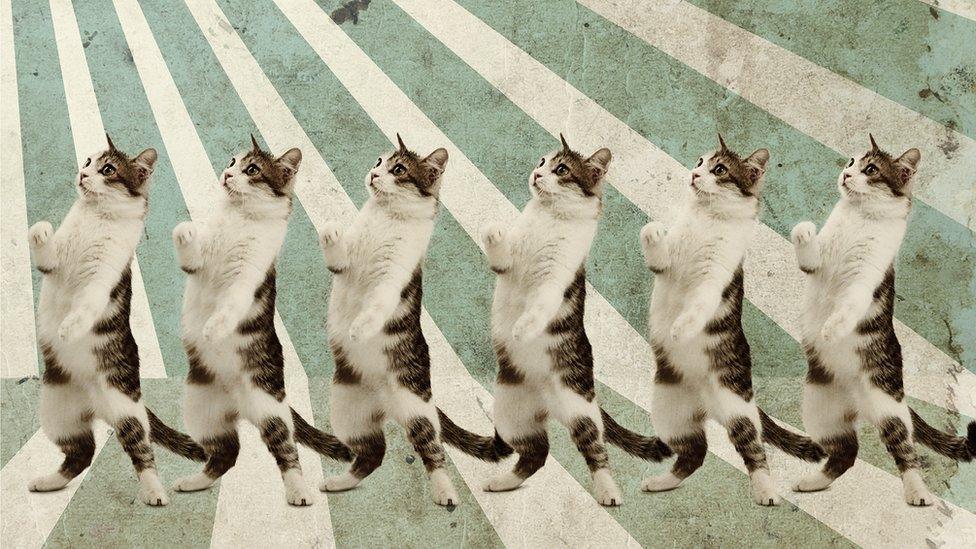
Many theatres in England had their very own cat, who played the dual role of keeping the building mouse-free and providing a calming back to stroke should stage fright kick in. Actress and cat-fan Beryl Reid (who left her £1m house to her cats when she died) said: "The act of stroking a cat is a great reliever of tension and brings down the blood pressure."
Reid also took home the Lyric Theatre's cat, Fleur, when the mouser retired.
One of the most famous theatre cats was Beerbohm, who lived at London's Gielgud Theatre (formerly the Globe) for 20 years. He was known for strolling across the stage while a production was under way, and made his debut in the Hinge and Bracket Review of 1976, stealing the limelight. He was also responsible for destroying feathered hats - and stuffed birds that were being used as props. He eventually retired to Beckenham with the theatre's master carpenter Tony Ramsay.
When he died in 1995, he became the only cat to be honoured with a front-page obituary in the theatre newspaper The Stage, which says the actors Paul Eddington and Penelope Keith were special fans. A further extract reads: "During the course of his career, he overcame a near-fatal road accident in Soho and beat off a chocolate addiction."

Girl Cat and Boy Cat were resident at the Noel Coward Theatre (formerly the Albery). Boy Cat's claim to fame was that during a Royal Gala performance he ate Princess Margaret's bouquet.
Current theatre cats include Pluto at Battersea Arts Centre, external who actually appeared in a production - he was the black cat in Edgar Allen Poe's The Masque of the Red Death - Marley, external and the one-eyed Pirate, who is currently missing, external from the Bush Theatre.
Literary cats
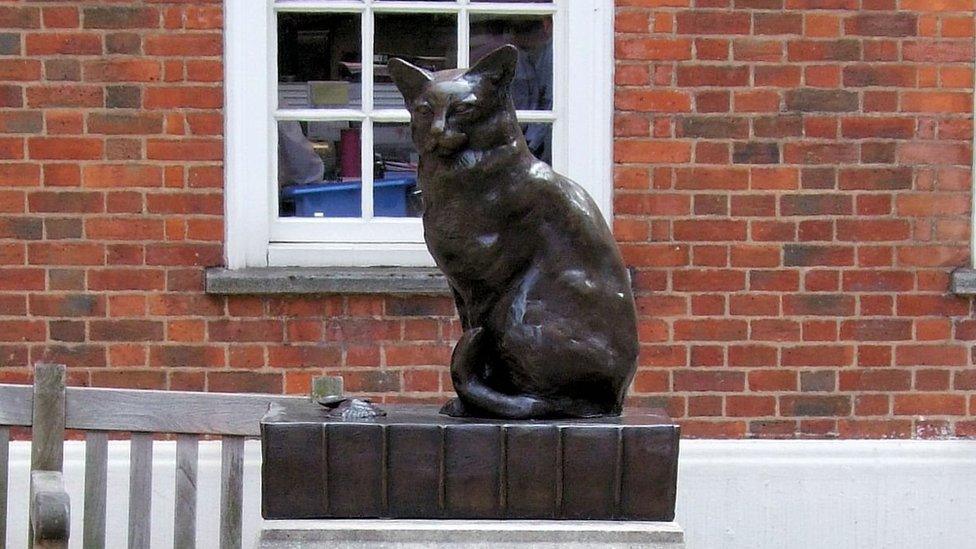
Hodge is portrayed sitting next to a pair of empty oyster shells on top of Johnson's famous dictionary
Dictionary-writer Samuel Johnson had a cat called Hodge, for whom he used to buy oysters. Hodge is mentioned in Boswell's Life of Johnson, where he is described as "a very fine cat indeed".
On his death, Hodge's life was celebrated in An Elegy on The Death of Dr Johnson's Favourite Cat by Percival Stockdale, published in 1778. In 1997 Hodge was immortalised in the form of a bronze statue outside the house in Gough Square he shared with Johnson.
Another cat that appeared in literature was Foss, Edward Lear's pet puss, who popped up rhymes and drawings. Servants had shortened Foss's tail in the belief it would keep him from wandering off, and he was on the rotund side and not considered an attractive cat. But Lear was very fond of him - to the extent that, legend has it, when Lear built a new house he instructed the architect to design it to be exactly like the old one so Foss would not be too disorientated by the move. The tabby features in the rhyme How Pleasant to Know Mr Lear.
He has many friends, lay men and clerical,
Old Foss is the name of his cat;
His body is perfectly spherical,
He weareth a runcible hat.
Mention should also be made of the second-most famous cat in Alice's Adventures in Wonderland - Dinah. Dinah was the real-life Alice's real-life cat.

Foss and Edward Lear
Academic cats
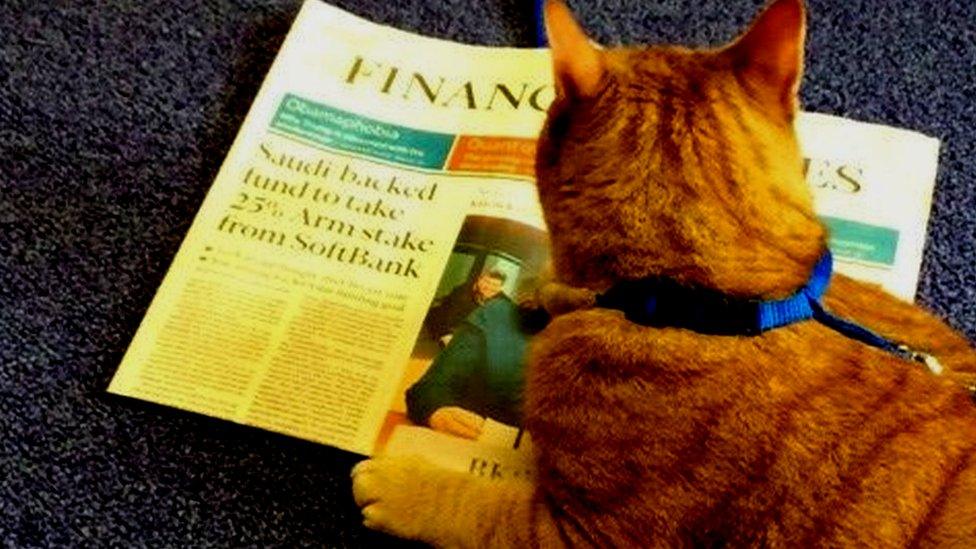
Jasper catches up on the latest financial news
Three-legged Jasper helps students at Cambridge University to relieve stress during the exam season.
The ginger tom officially belongs to the deputy librarian at the Marshall Library of Economics, and "tea with Jasper" events have proved popular with those wanting a break from swotting. Jasper can often be found snoozing on top of copies of the Financial Times.
At the University of Essex, Pebbles is the official campus cat on hand (paw) to greet students. He even has his own NUS card, complete with photographic ID, which entitles him to discounted entry to Colchester's clubs.
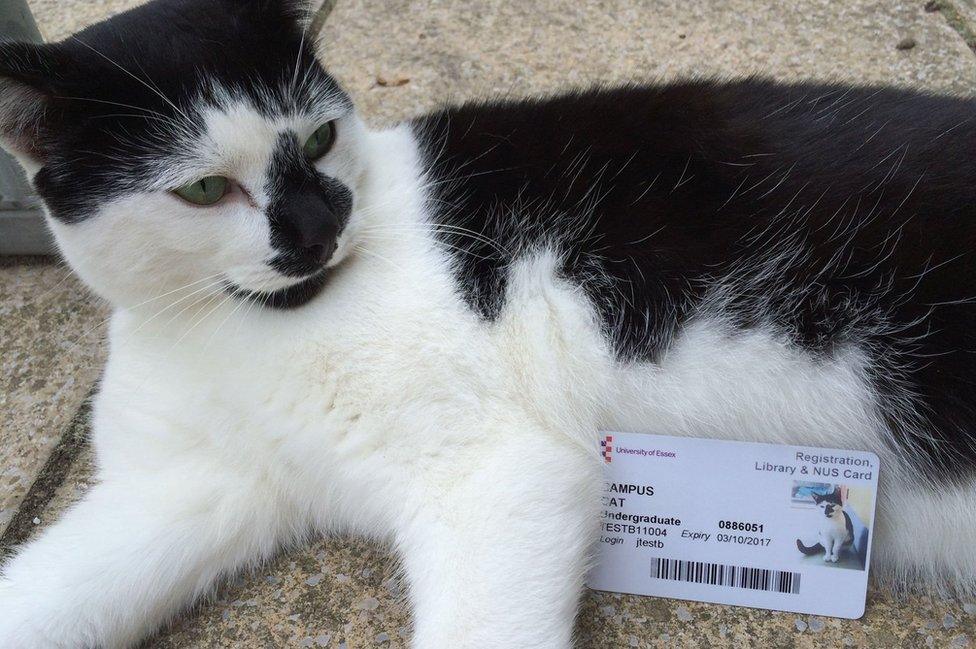
Pebbles is ready for a new term
Political cats
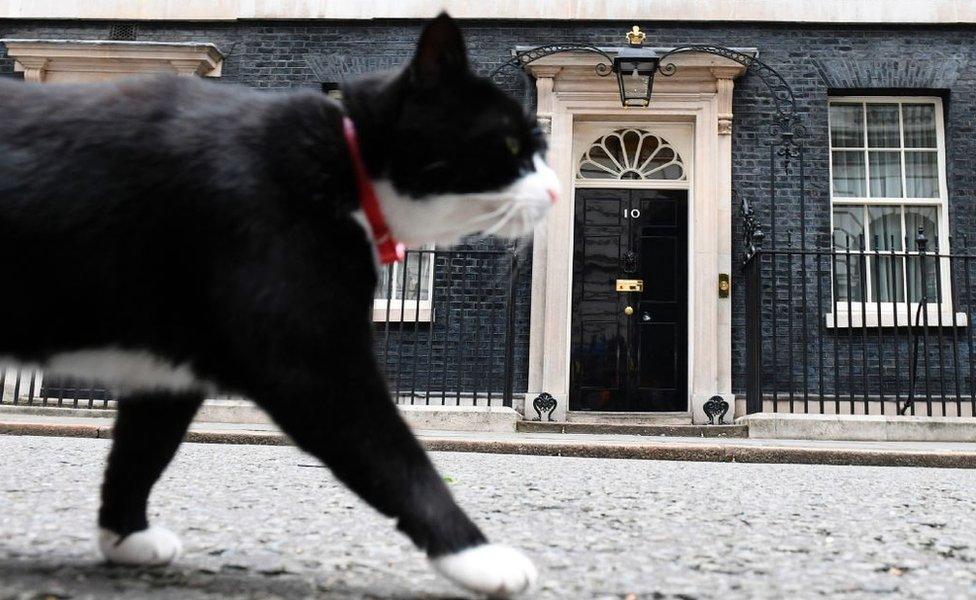
Palmerston strides past No 10
Larry, external and Palmerston, external - official Chief Mousers at the Cabinet Office and Foreign Office respectively - may be the modern (furry) faces of government, but cats have been employed to rid the corridors of power of rats and mice since at least the 1800s.
Although many were in place in an unofficial capacity, "paid" merely with titbits and the innards of the the rodents they caught, records at the National Archives show that at least some received an allowance.
In 1929, Peter, a black cat at the Home Office, had 1d per day dedicated to his upkeep.
He was in position for 17 years and was followed by Peter II, who died young after being hit by a car, and then Peter III.
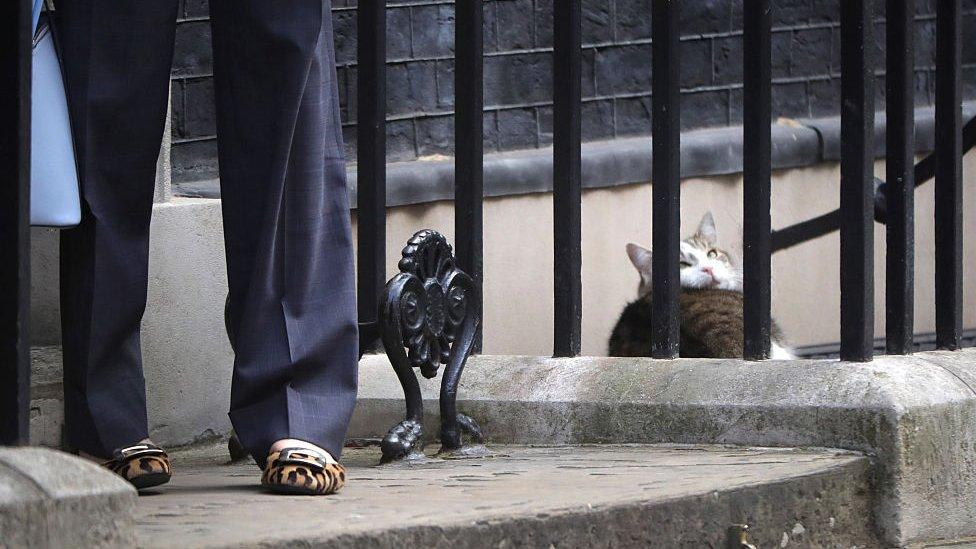
Larry the cat is hoping Theresa May's leopard-print kitten heels are not made of a real pelt
In 1964, breaking the glass ceiling, if not the monotony of naming, came Peta, a female Manx. Peta had been offered to the home secretary by the Lieutenant Governor of the Isle of Man and was handed over with great ceremony.
Because of this, she was considered to have a diplomatic background and was paid as such - with a salary of £13 per annum.
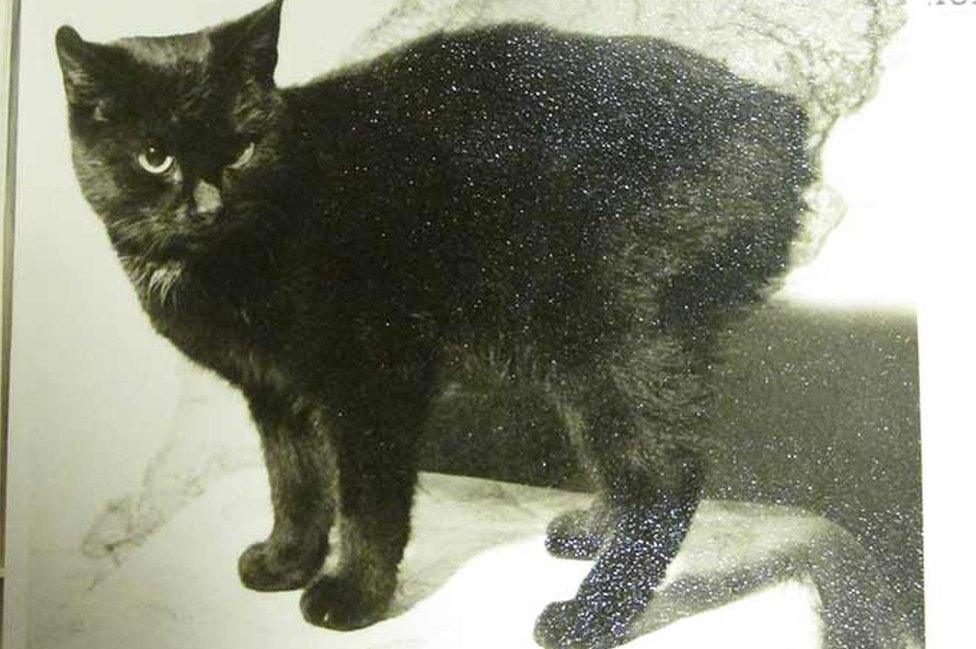
Peta was considered to have a diplomatic background and could not be sacked, to the disappointment of staff
When staff complained she was lazy and not housetrained and suggested she might be "put out to grass", a memo was issued ordering she must remain as her appointment had been so public that letting her go could result in adverse publicity.
Other notable political felines include Winston Churchill's cat Jock. When Churchill's home was given to the nation it was requested that there should always be a similar cat in residence. Jock VI is the current cat-in-residence at Chartwell.

Jock VI couldn't resist licking at Churchill's bust
Church cats
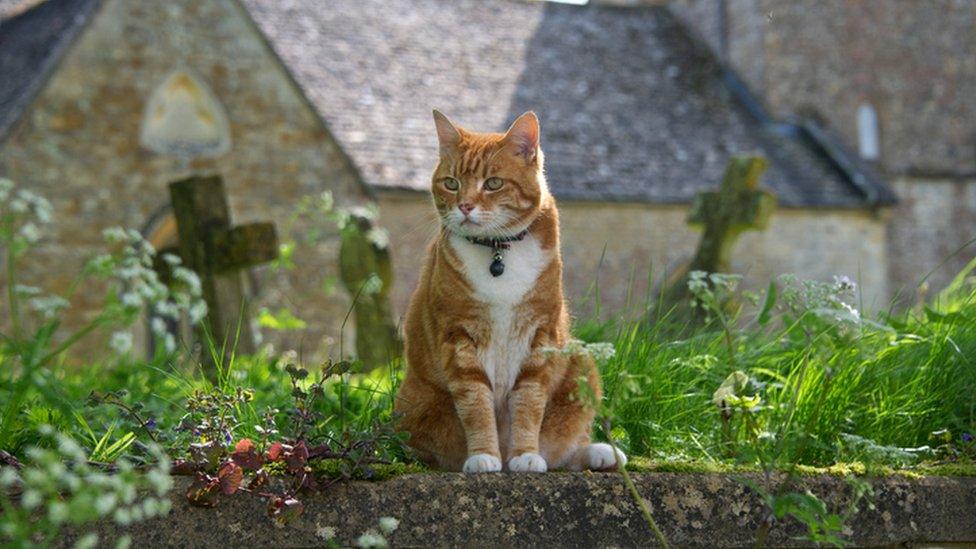
In 1936 a tabby arrived at St Augustine's and St Faith's Church on Watling Street in the City of London, close to St Paul's Cathedral. The rector's wife found her a box to sleep in and some food, and the cat was allowed to stay. They named her Faith, after one of the church's saints.
In 1940, she gave birth to a kitten called Panda and shortly after, on Monday 9 September, the church was bombed. Faith found a recess and protected Panda throughout the raids - and remarkably, both survived.
Afterwards, the rector put a photograph and some text on the wall, paying tribute to the "bravest cat in the world" who "stayed calm and steadfast and waited for help" while the church collapsed and burned around her.
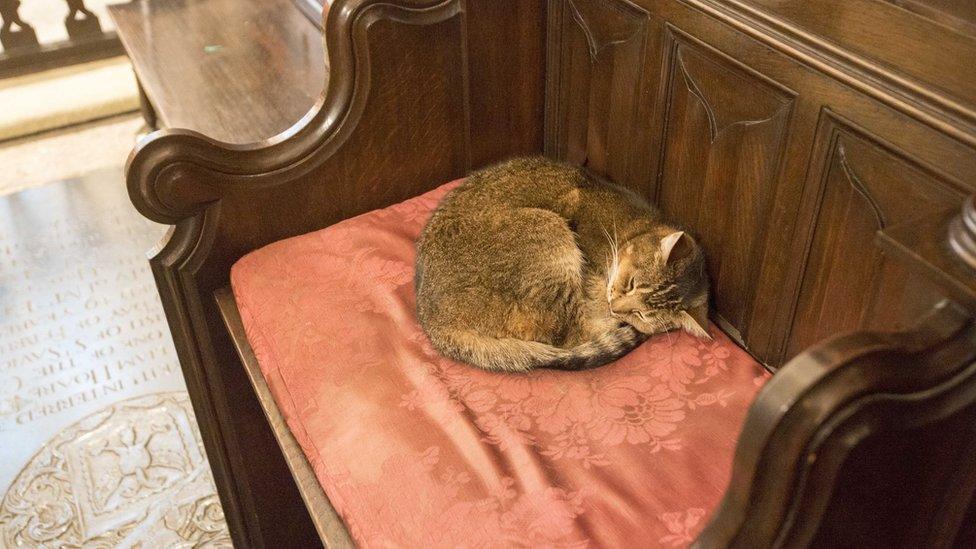
Doorkins Magnificat during a royal visit to Southwark Cathedral
Still keeping the pews warm in the capital is Doorkins Magnificat, external, the cat-in-residence at Southwark Cathedral. In the spirit of the old nursery rhyme, external she is a "pussycat pussycat who met the Queen" when Her Majesty visited the cathedral in 2013.
Doorkins is famous enough to have a book published, external about her, which gives a complete tour of the cathedral and a typical week in the life of the Magnificat.
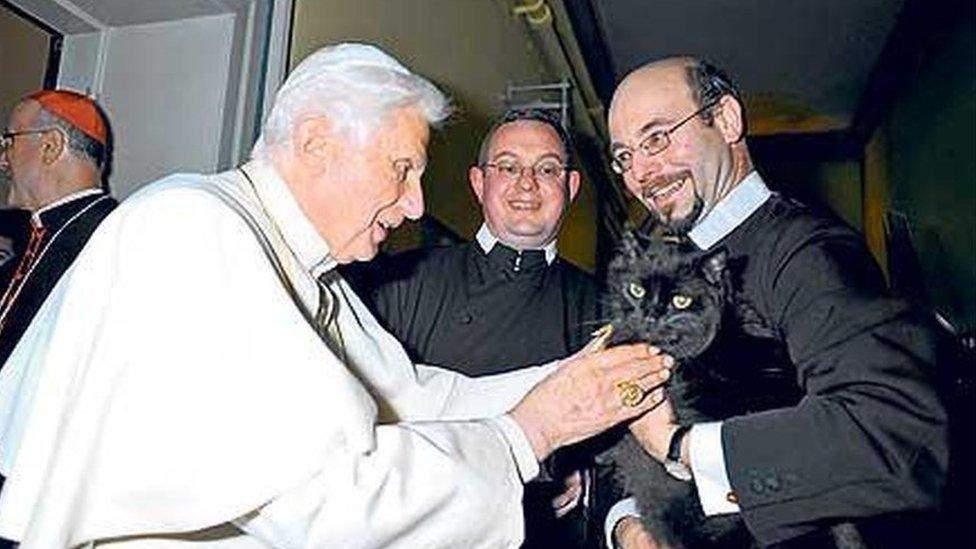
Pushkin looks delighted with his papal blessing
Pushkin of the Birmingham Oratory has hobnobbed with the head of the other Church - in September 2010, Pope Benedict XVI visited on his state visit to the UK for the beatification of Cardinal John Henry Newman, who founded the church in the 19th Century.
The Pope emerged from a lift and was greeted by Pushkin, who received a special papal blessing.
Wells Cathedral in Somerset has a resident ginger cat, external, Louis, who can often be found sleeping against the radiators in the cathedral, or on a special chair in the Sugar Chantry.
And St Leonard's Church in Shoreditch is where Schrödinger, a former stray, either does or does not live.
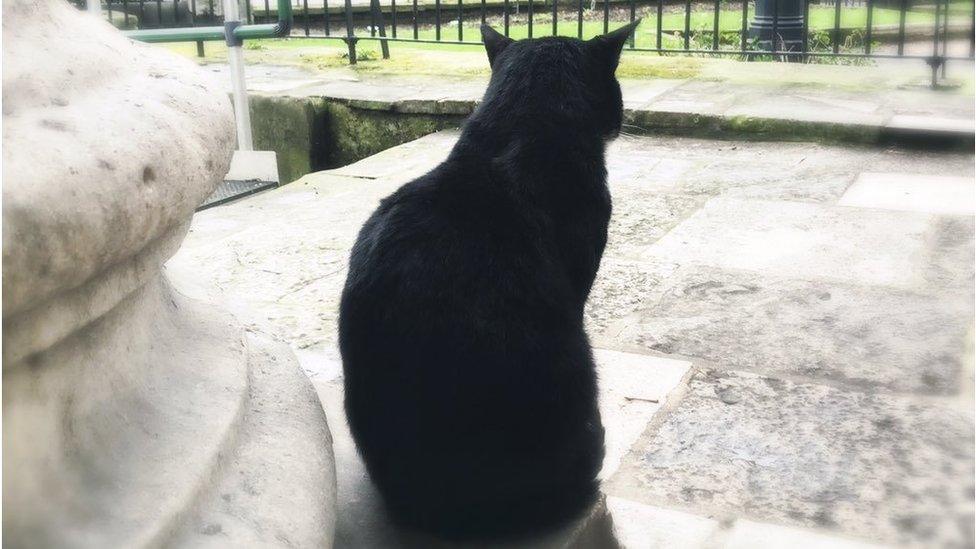
Schrödinger sits on the steps of St Leonard's in Shoreditch
Station cats

Felix the Huddersfield station cat
Huddersfield railway station cat Felix has frequently featured in the media, has had a book written about her and also has her own line of merchandise, external - but she's not the only station cat worth mentioning.
Snowy at Harringay, Hector at Redruth in Cornwall,, external Jess at Andover in Hampshire, Paul at South Parkway in Liverpool and Stan at Charlbury in Oxfordshire are just a few more of the pusses on platform patrol.
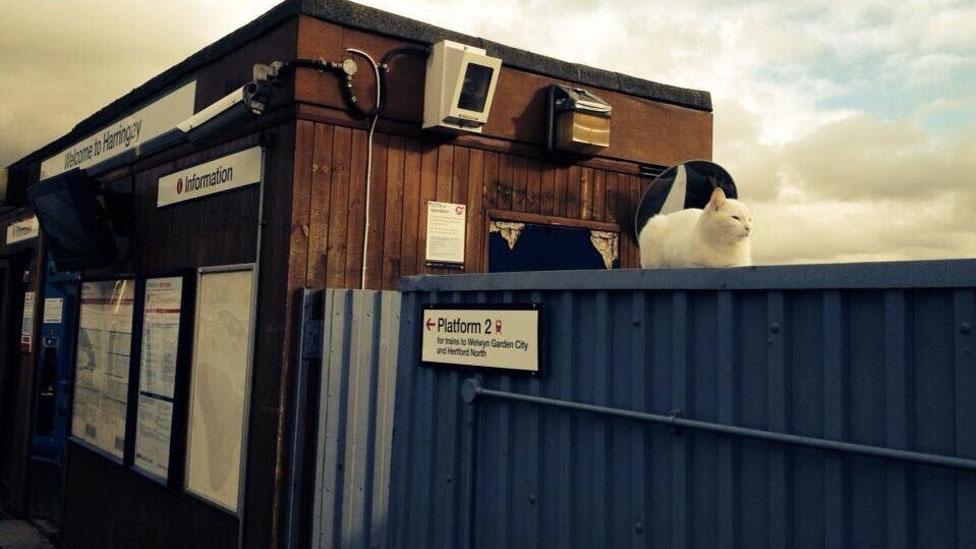
Snowy keeps an eye on passengers at Harringay
Not only do they keep rats and mice away, but passengers are keen to be greeted by their friendly fluffy faces - and some people travel specially to see them.
Over in Japan, a female cat called Tama was credited with vastly increasing the number of passengers going through Kishi station in Kinokawaby - contributing an estimated 1.1 billion yen (£5.7m) to the local economy.
When she died, she was elevated to the status of goddess.
It was an apt reward - but no more than many a cat believes it deserves.

Tama had a special uniform, including a cap and jacket
- Published28 January 2018

- Published9 April 2017
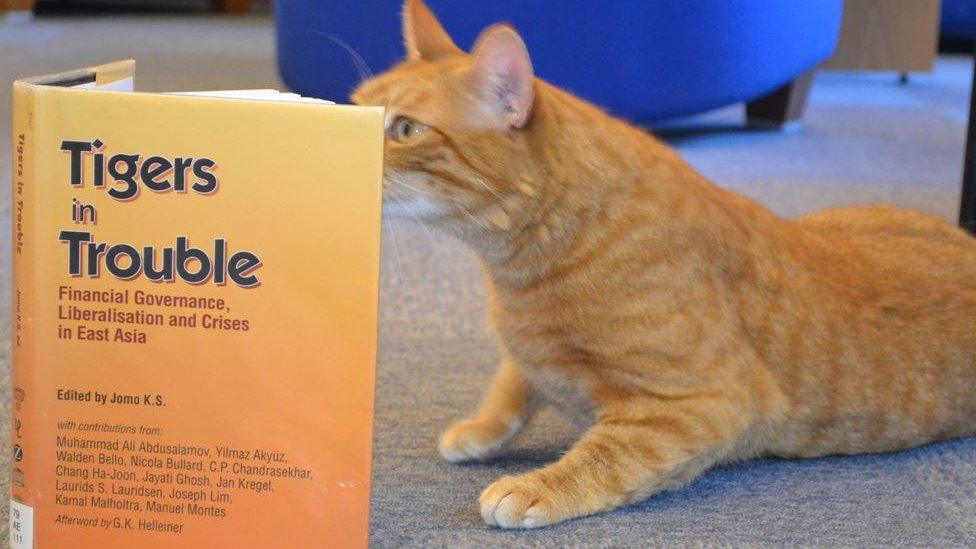
- Published6 August 2016

- Published27 October 2016
